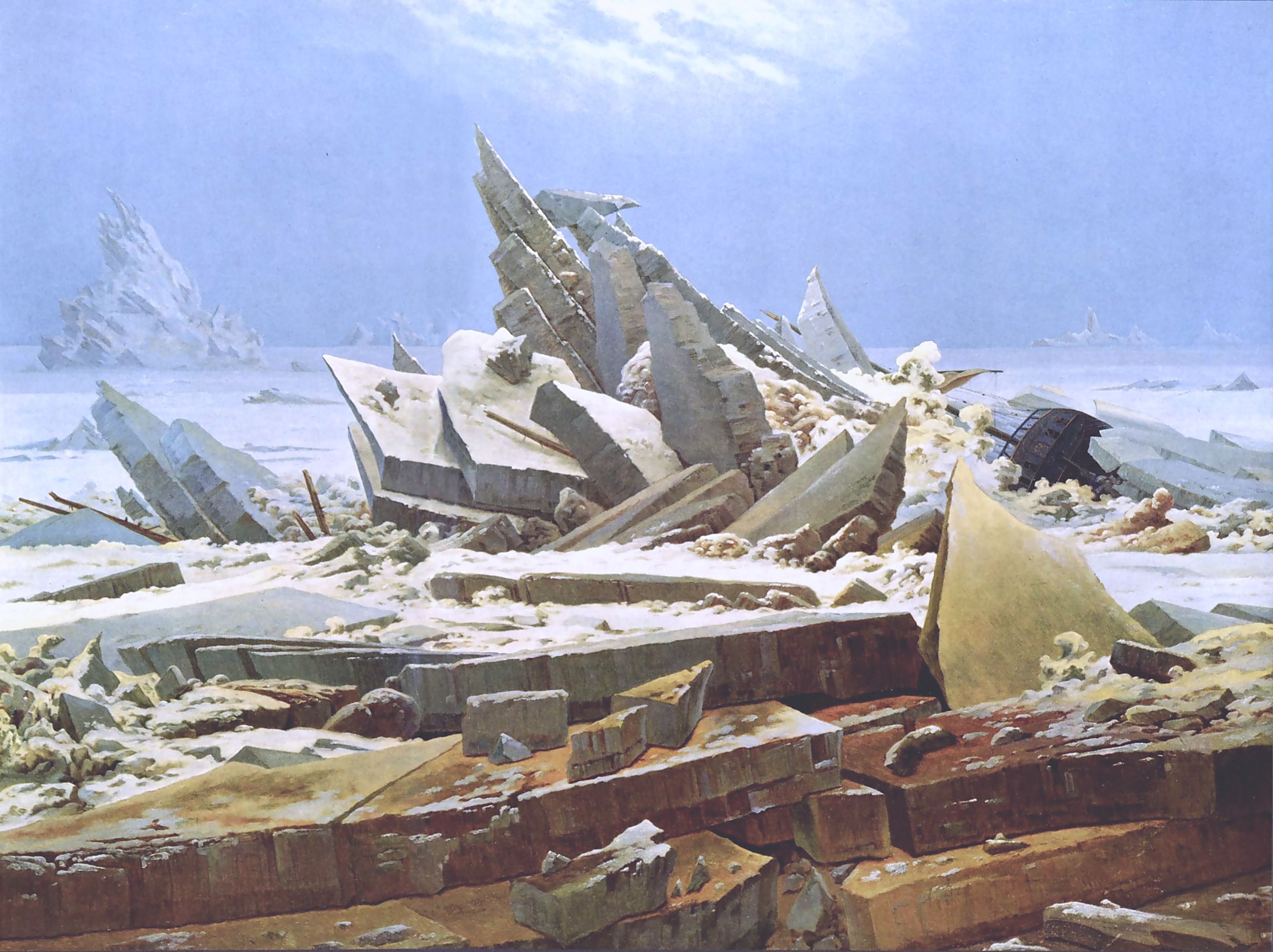
Let us continue with Caspar David Friedrich, whose portrait we saw yesterday. Today’s painting Das Eismeer (The Sea of Ice) is also known as Die gescheiterte Hoffnung (The Wreck of Hope). Between all the ice we can see the crushed hull a ship on the right. It is a strange and untraditional painting due to it’s setting in the Arctic and the fact that ice was the main subject instead of the wreck. And although Friedrich was already famous when he painted it, it remained unsold up to his death in 1840.
Art historians have had a range of interpretations for the painting, form the obvious reference to men’s mortality to political ones. But it is perhaps just true to the spirit of romanticism as Wikipedia explains it:
“The movement emphasised intense emotion as an authentic source of aesthetic experience, placing new emphasis on such emotions as apprehension, horror and terror, and awe—especially that experienced in confronting the new aesthetic categories of the sublimity and beauty of nature.”
Friedrichs genius was choosing a setting which exemplifies Romanticism to the extreme; the almost unearthly beauty of the arctic landscape combined with the horrifying disaster of a ship crushed by the ice.